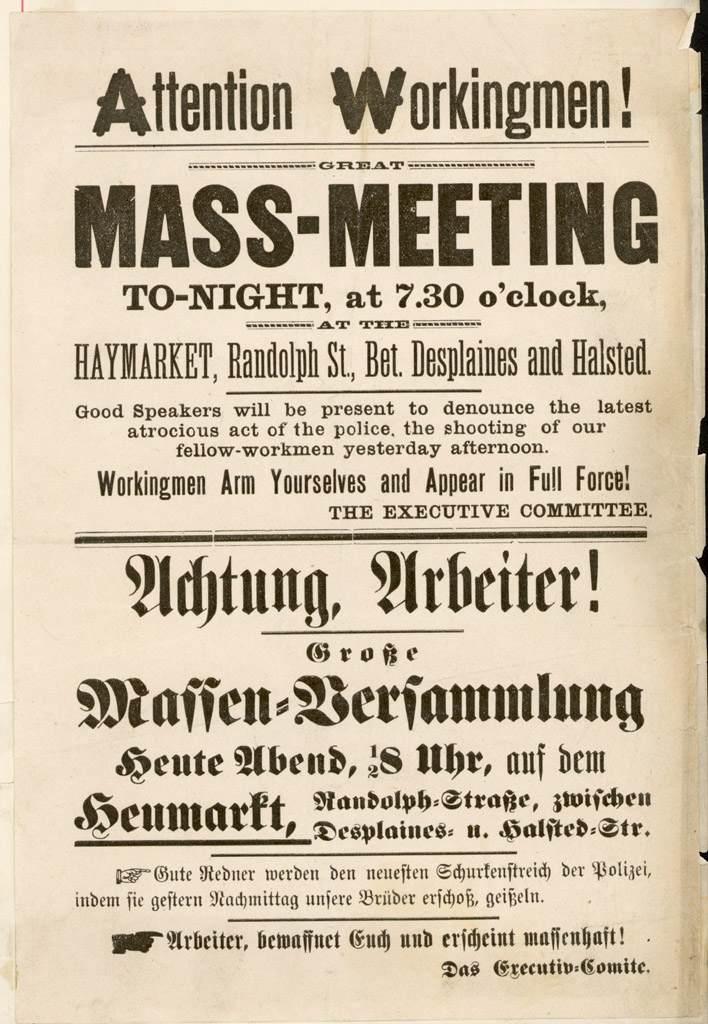(a) nobody knows who planted the bomb, (b) I just freaking gave you the name of, and the link to, the Federation of Organized Trades and Labor Unions, and (c) Association Fallacies are still just that.
>> Gompers led the anti-Socialist faction inside the AFL, losing to them only once, in 1894. He argued that socialists believed workers and unions could never co-exist with business interests and wanted to use the labor unions to advance their more radical political causes. By 1920 Gompers had largely marginalized Socialist influence to a few unions, notably coal miners and the needle trades.
[33][34] <<
>> In October 1884, a convention held by the
Federation of Organized Trades and Labor Unions unanimously set
May 1, 1886, as the date by which the
eight-hour work day would become standard.
[20] As the chosen date approached, U.S. labor unions prepared for a
general strike in support of the eight-hour day.
[21]
On Saturday, May 1, thousands of workers went on strike and rallies were held throughout the United States, with the cry, "Eight-hour day with no cut in pay." Estimates of the number of striking workers across the U.S. range from 300,000
[22] to half a million.
[23] In New York City, the number of demonstrators was estimated at 10,000
[24] and in Detroit at 11,000.
[25] In
Milwaukee, Wisconsin, some 10,000 workers turned out.
[25] In Chicago, the movement's center, an estimated 30,000-to-40,000 workers had gone on strike
[22] and there were perhaps twice as many people out on the streets participating in various demonstrations and marches,
[26][27] as, for example, a march by 10,000 men employed in the Chicago lumber yards.
[23] Though participants in these events added up to 80,000, it is disputed whether there was a march of that number down
Michigan Avenue led by
anarchist Albert Parsons, founder of the
International Working People's Association [IWPA], his wife
Lucy Parsons and their children.
[22][28]


